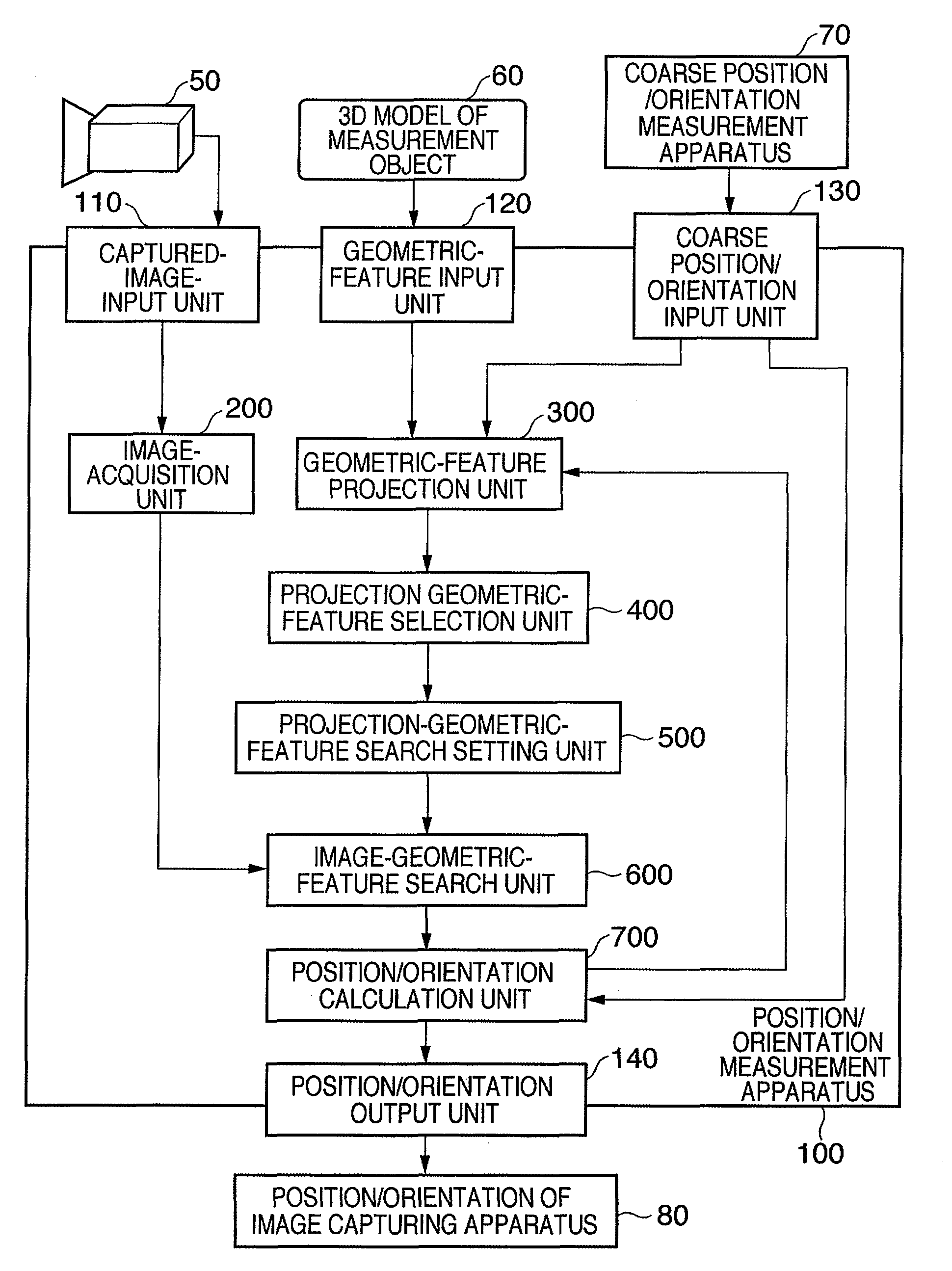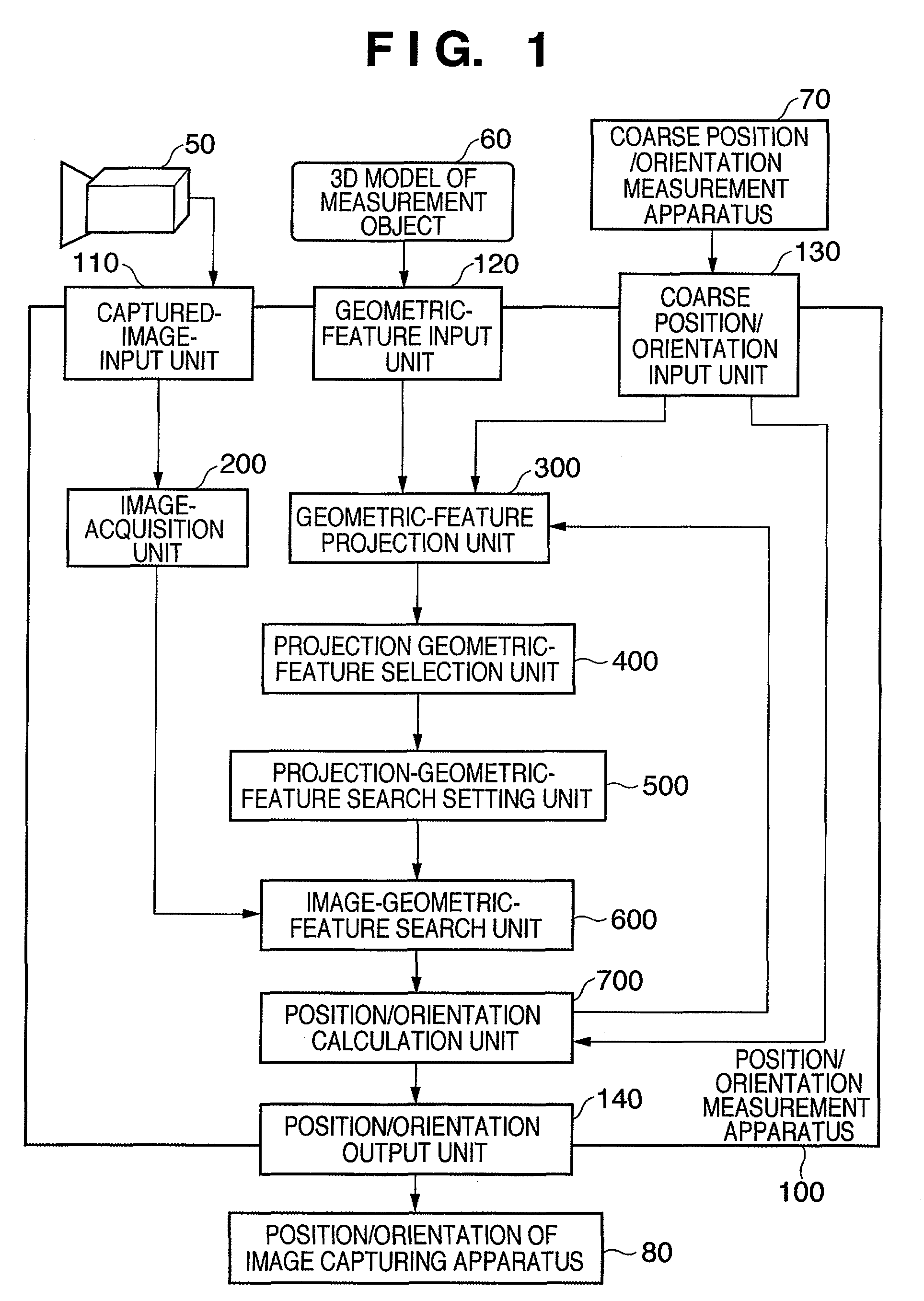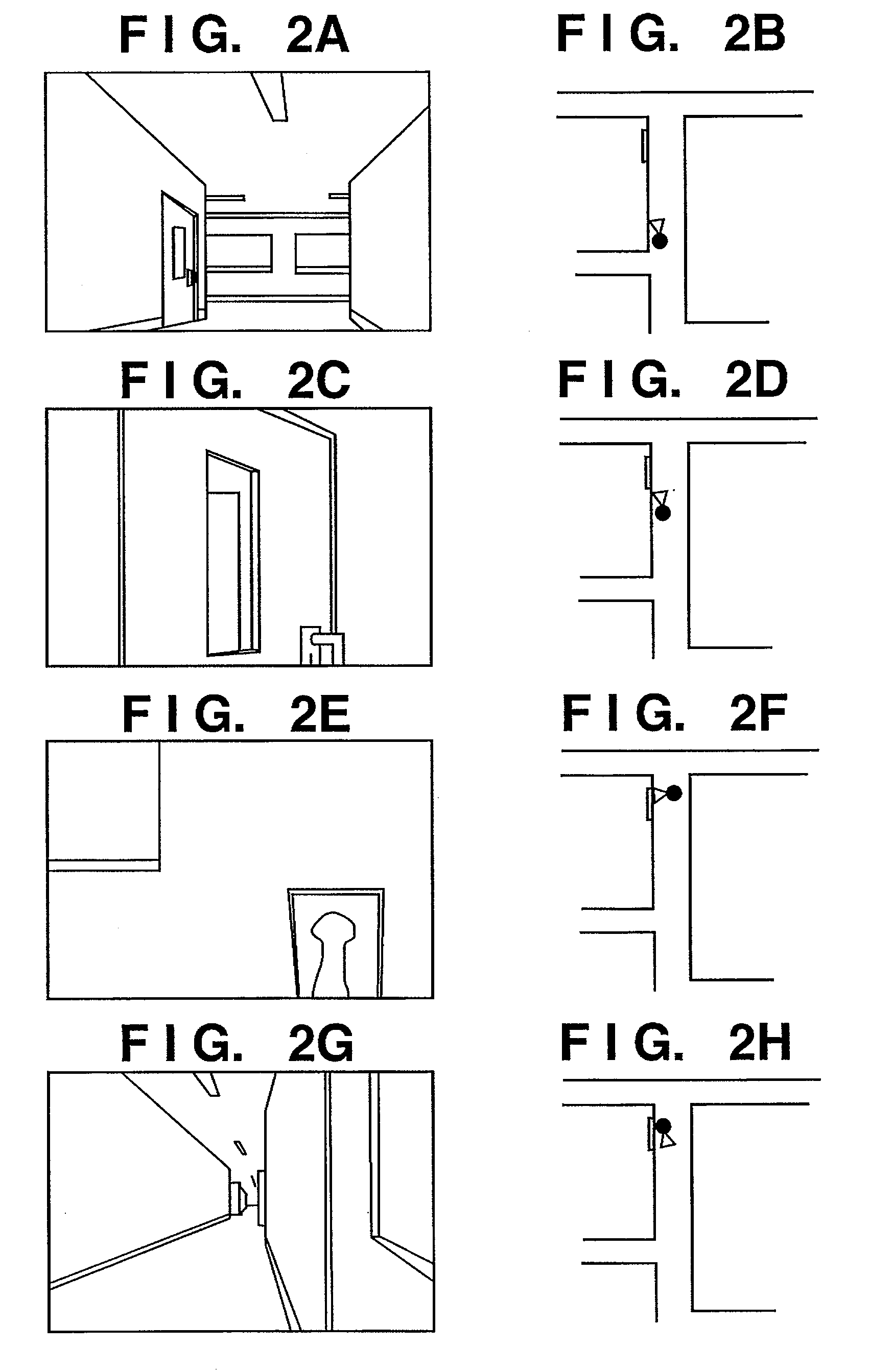Measurement apparatus and control method
a measurement apparatus and control method technology, applied in image enhancement, instruments, image data processing, etc., can solve problems such as unreliable position and orientation estimation, limited edge search range within captured images, and inability to obtain position and orientation efficiently
- Summary
- Abstract
- Description
- Claims
- Application Information
AI Technical Summary
Benefits of technology
Problems solved by technology
Method used
Image
Examples
embodiment 1
[0032]FIG. 1 is a block diagram showing a measurement apparatus 100 and an image-capturing apparatus 50. FIG. 1 illustrates the flow of processing and data flow in the measurement apparatus 100. It should be noted that the configuration of the measurement apparatus 100 shown below is partially or entirely implemented as a result of execution of a control program stored in a ROM or RAM, not shown, by a CPU, not shown. In other words, the measurement apparatus 100 may be implemented by executing a control program executing the hereinafter described processing on a regular computer.
[0033]In the measurement apparatus 100 of the present embodiment, an image-capturing apparatus 50, which captures images of a scene, and a coarse measurement apparatus 70 (marked “coarse position / orientation measurement apparatus” in the figures), which acquires the general position and orientation of the image-capturing apparatus 50, are connected via a captured-image-input unit 110 and a coarse input unit ...
embodiment 2
[0099]The above-described Embodiment 1 described a method, in which a search is carried out in a captured image for image geometric features corresponding to the positions of projection geometric features and position and orientation is estimated so as to decrease the distances therebetween. The ordinary Sobel operator and Canny operator can be uses in the detection of line segments carried out during the detection of image geometric features in captured images. Here, line segments detected by image processing in captured images (referred to as edges as appropriate) are called edge elements.
[0100]As far as the matching of projection geometric features and edge elements is concerned, assuming that a coarse position and orientation has been obtained, the edges possessing similar length, direction, etc. among edges located in the vicinity of the projection geometric features can be associated and position and orientation can be estimated so as to reduce the distances to these edge elem...
embodiment 3
[0101]When the measurement object is a 3D model having huge line segments, such as a model describing an entire building structure, the geometric features required for position and orientation estimation are subject to considerable variation depending on the distance between the image-capturing apparatus 50 and the measurement object. For this reason, if processing cannot be performed in an efficient manner, it becomes difficult to carry out position and orientation estimation within the imaging interval of the camera. In actual practice, in the captured image, the geometric features required for the estimation of position and orientation may possess a certain length and may have various directions.
[0102]Accordingly, processing that takes into consideration the sequence of processing of the geometric features required for position and orientation estimation makes it possible to process huge geometric features while maintaining the accuracy of position and orientation because the pro...
PUM
 Login to View More
Login to View More Abstract
Description
Claims
Application Information
 Login to View More
Login to View More - R&D
- Intellectual Property
- Life Sciences
- Materials
- Tech Scout
- Unparalleled Data Quality
- Higher Quality Content
- 60% Fewer Hallucinations
Browse by: Latest US Patents, China's latest patents, Technical Efficacy Thesaurus, Application Domain, Technology Topic, Popular Technical Reports.
© 2025 PatSnap. All rights reserved.Legal|Privacy policy|Modern Slavery Act Transparency Statement|Sitemap|About US| Contact US: help@patsnap.com



